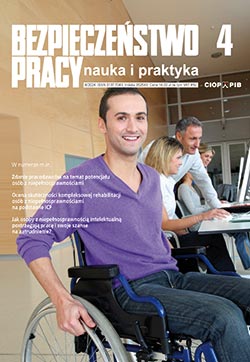Helmets for sport and recreation – construction and standards’ requirements
Marcin Jachowicz
While practicing sports and participating in recreational activities, humans are exposed to a number of hazards, among which head injuries are one of the most dangerous. We are unable to completely eliminate them, e.g., when cycling, skateboarding, skiing or snowboarding. For this reason, all sorts of protective headgear selected according to the prevailing threats are applicable to protect the head. The design of such equipment is continuously changing and evolving. New materials and technical solutions that aim to increase the user’s safety and comfort are introduced. To achieve that goal, it becomes necessary to reduce the weight and increase the functionality of protective helmets. Such goals can be met only by creating more specialized structures designed not only for the intended physical activity but also for the specific conditions in which it is practiced. This paper contains material that presents the basic protective helmets and the materials used for their construction, as well as a review of the design of helmets for sports and recreational activities protecting the head against impact against stationary objects. General information concerning the regulatory requirements and the methods of testing of this type of equipment has also been presented.
Functional requirements for smart clothing for mountain rescuers: results of own research
Anna Dąbrowska, Pamela Miśkiewicz
Wearable electronics in textile products can be used in specialized protective clothing to monitor users’ health and hazards in their direct surroundings. Considering the very hazardous and variable working conditions during rescue operations, mountain rescuers could also use such smart clothing. This has been confirmed by the results of a survey on mountain rescuers’ needs for smart protective clothing for rescue operations in the mountains. According to the results of this survey, it is necessary to develop new, innovative clothing for mountain rescuers with a location sensor, cooling/heating system, physiological state sensor and energy harvester supporting powering of, e.g., a smartphone.
Brains after hours: shift work’s impact on the effectiveness of employees’ cognitive abilities
Kamila Nowak
Stationary computer devices – identification and assessment of the electromagnetic field in the working space
Krzysztof Gryz, Jolanta Karpowicz
This article discusses the electromagnetic field emitted by stationary computer devices (personal computers and servers): CRT and LCD screen monitors, system units and peripheral equipment such as wireless communication mice and keyboards, direct current suppliers (AC/DC), uninterruptible power supplies (UPS), and network and electrical supplying cables. Computer devices emit an electromagnetic field from 50 Hz to several GHz. Electromagnetic hazards in the working space near those computer devices do not require individual assessment of the compliance of the level of electromagnetic exposure with the limits provided with respect to the protection of workers against electromagnetic hazards, because the distance between the operator’s body and the equipment is at least 20 cm. This article does not discuss other exposure scenarios such as repairing devices or using portable devices.




























